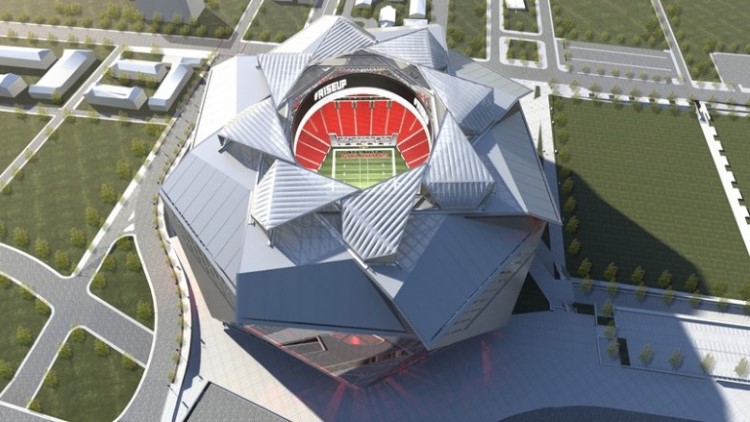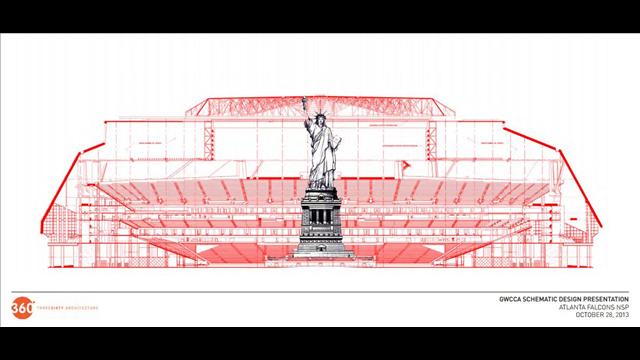For anyone who paid attention to the U.S. sports construction boom 25 years ago, you can’t help but scratch your head and wonder what the heck happened to all those new venues that opened with such fanfare in the early 1990s. At that time, I reported on new arenas under construction in Charlotte, Orlando, and Miami. Today, all three have been replaced by a second wave of even newer, niftier digs demanded by an insatiable market.
In Atlanta, the 19-year-old home of the Braves, Turner Field, was originally built for the 1996 Summer Olympic Games at a cost of $200 million. Last year, the professional baseball team announced that the ballpark now needed at least $150 million worth of structural renovations, and perhaps another $200 million in “fan improvements.” Citing those projected costs, the Braves then announced plans to move to suburban SunTrust Park, a new, $670-million, state-of-the-art venue which broke ground in September. It is scheduled for completion in February 2017.
That same year, 2017, will also see the migration of the city’s professional football team to its own new home, the $1.4-billion, 71,000-seat Falcons Stadium, now being erected adjacent to the Georgia Dome, just three miles from Turner Field. The Dome, itself, opened in 1992 and cost $214 million to build.
Last month, at the ENR FutureTech Conference in Atlanta, I asked the new stadium’s designer, Bill Johnson, senior principal at Kansas City-based 360 Architecture, what will make this new project more durable than its predecessor. He replied, “When the new Falcons Stadium is completed, it will be the first LEED platinum-certified sports stadium.”

So, appropriately enough, it is that very sustainability that should prolong the useful life of the 1.8-million-sf, multi-purpose structure, he suggests.
“And only with today’s technology could this project be designed and built,” Johnson told the audience at the Georgia Tech Conference Center.
Indeed, the stadium’s oculus retractable roof design is just one of the many ground-breaking, technology-aided features included by 360 Architecture, which last fall was acquired by St. Louis-based AEP giant HOK. The unique, eight-panel roof resembles a pinwheel that closes over the playing field. When opened, the eight triangular translucent panels will create the illusion of a birds wings extended.
Surrounding the opening of the roof will be a giant, halo-shaped video board that will enclose the playing surface, stretching from one of the 10-yd-lines to the other and curving above each end zone to complete the oval. With a circumference of nearly 1,100 linear ft, and a height of some 63 ft, the massive, 360° halo board will easily become the largest high-definition video board in the world.




Last summer, Johnson told DesignBoom.com that the circular opening in the roof was inspired by the Roman Pantheon. The roof was designed to be made of a clear, lightweight polymer material that can adjust its opacity to control light, and much of the exterior will be clear polymer or glass to allow views to the outside. The middle concourse and upper bowl were eliminated in the east end zone to allow for an unobstructed view of the Atlanta skyline.
New Atlanta Stadium General Manager, Scott Jenkins, recently detailed the progress on-site and commented on what makes this venue so unique. “The building doesn’t remind me of anything,” he told AtlantaFalcons.com. “That was part of the design intent. If it reminded us of something, it wasn’t created quite right. It’s a very complex project. The roof is complex, the halo video board is complex, the fact that it’s on a tight, urban environment is complex, but I think, at the end of the day, we’re going to have a really unique stadium that’s going to blow people away.”
Sustainablity +
Plans for the stadium include water and energy conservation and the use of sustainable materials. The stated goal is to reach LEED platinum certification, a level never attained by any other sports facility. Relevant features include: collecting rainwater for cooling and irrigation, edible gardens on the outside of the stadium, and the use of solar panels to generate electricity in certain areas.

Discussion
Be the first to leave a comment.
You must be a member of the BuiltWorlds community to join the discussion.